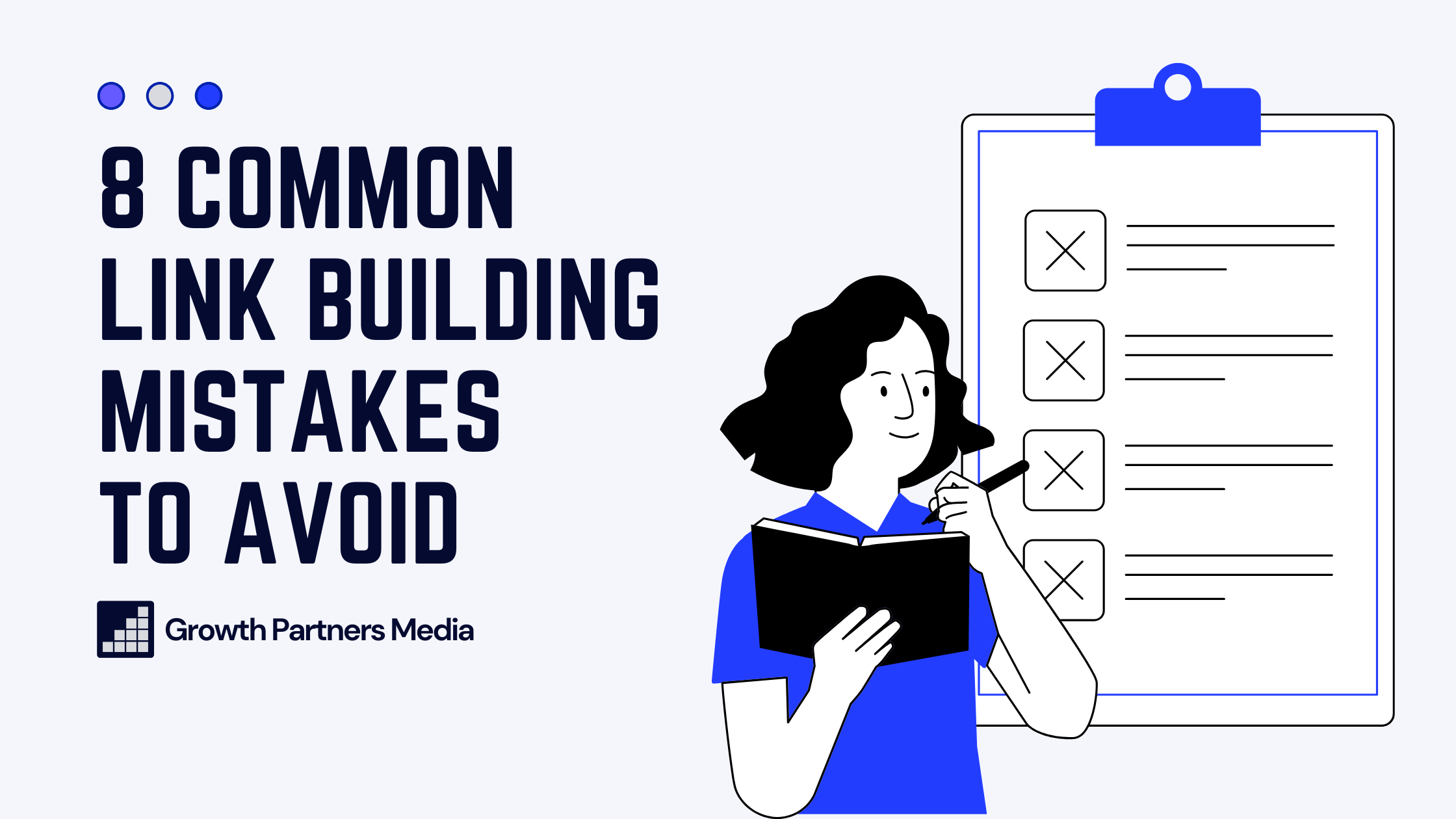Link building is one of the most powerful growth levers in SEO, but it’s also one of the easiest to screw up.
Not because you’re lazy.
Not because you don’t care.
But because the SEO world is crawling with bad advice, outdated tactics, and providers that prioritise profit over product.
We’ve seen it all:
The $20 guest post lists, the “safe” PBNs, and the link wheels. And we’ve seen good businesses pay the price in lost rankings, manual actions, and wasted budget.
In this guide, we’ll break down the most common and costly link-building mistakes we see every week.
1. Mistaking Quantity for Quality
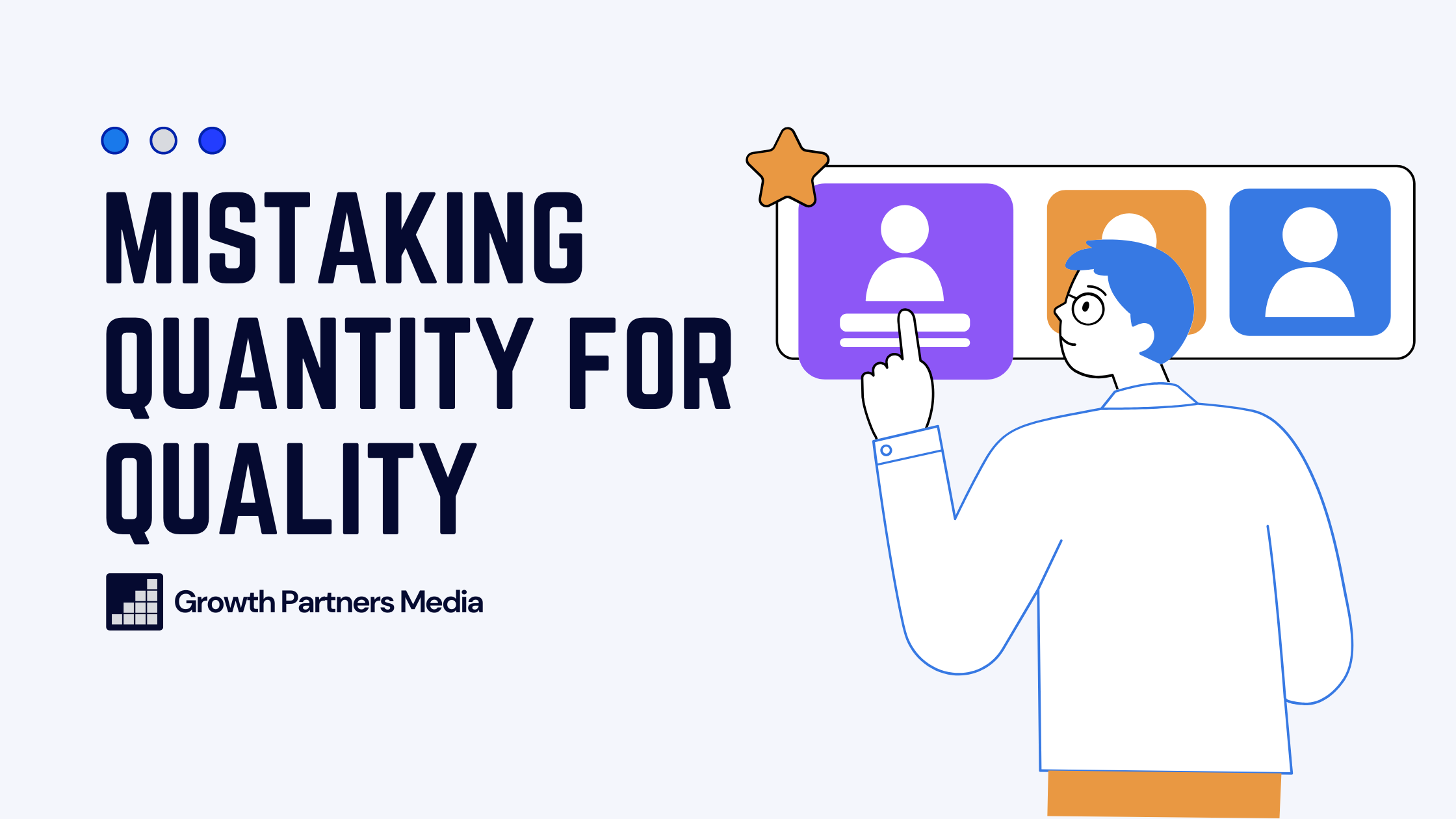
This one’s everywhere, especially in high-growth B2B businesses.
Teams set arbitrary targets like “we need 50 links this month” and treat link building like a volume game.
But one strategic, well-placed editorial link can drive more authority, traffic, and rankings than 20 low-value backlinks dumped on low-value websites.
Use our DR Comparison Calculator to see for yourself how link strength compounds when it’s coming from the right place.
Other traps I often see?
An unhealthy obsession with DA/DR.
Marketers fixate on those scores like they’re gospel. But these metrics are easy to game.
You can inflate DR with a private blog network in a weekend. That doesn’t make it a good link.
Here’s what actually matters:
- Is the context of the link relevant to your niche?
- Is it placed within high-quality content?
- Does the page have real traffic and engagement?
Forget buried resource pages or orphaned blog posts with zero visibility. The safest backlinks are those that live where people read, click, and share.
2. Buying from Vendor Platforms Without Vetting
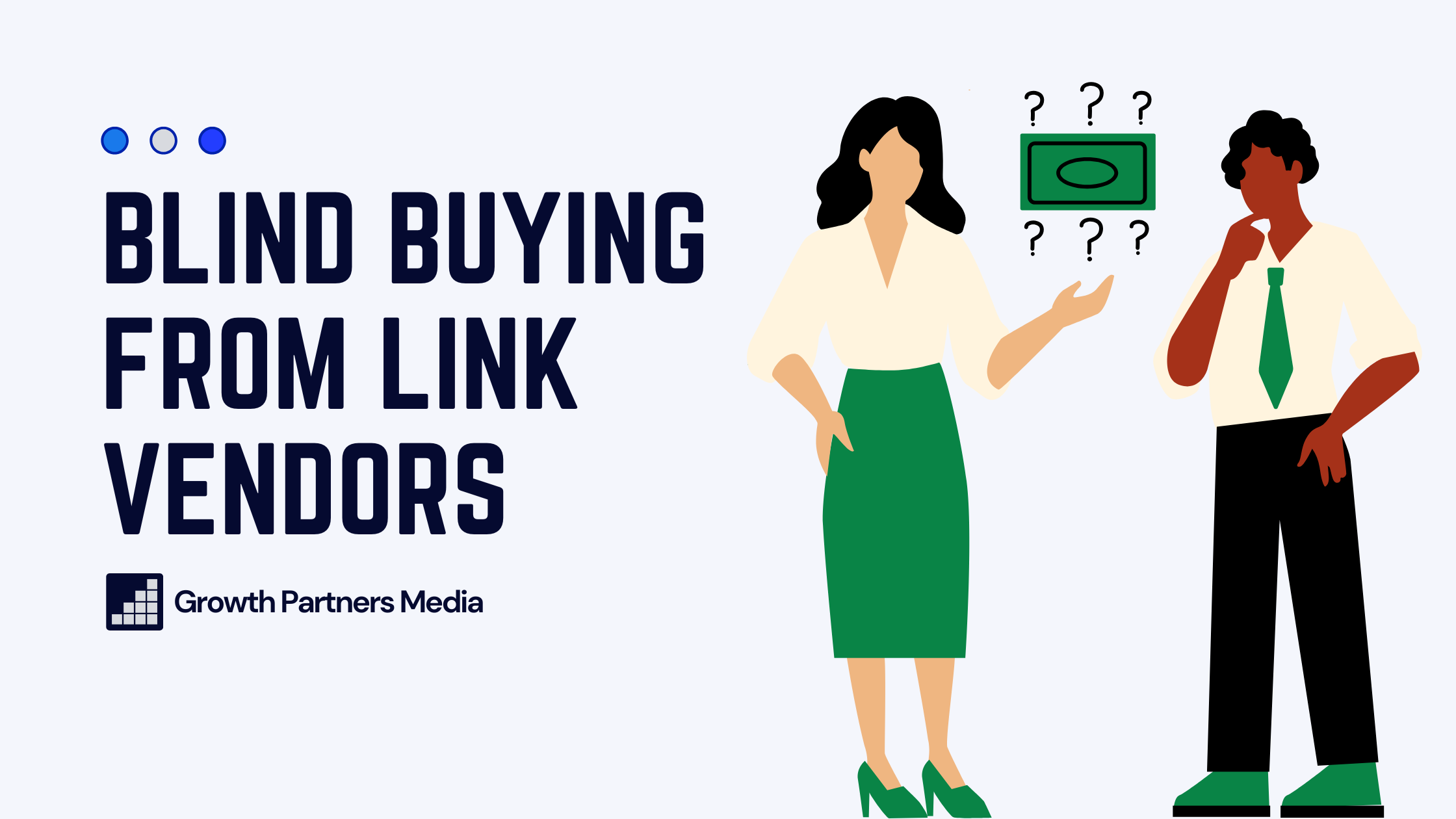
Look, I get it!
You’re busy, under pressure to show results, and a platform offers you 500+ link options at the click of a button.
Sounds efficient, right?
But most vendor platforms focus on volume over quality.
The content is often AI-written, barely edited, and slapped onto blogs that exist for one purpose:
Selling backlinks to whoever pays the moolah.
Worse still?
A lot of these sites were revived from expired domains, rebranded, and added backlink vendor platforms like they’re legit publications. They’re not. They’re private blog networks (PBNs) wearing a cheap disguise.
Placing links on these sites is like renting a billboard in the middle of a desert. No one’s driving by. There’s no traffic, no trust, no brand equity, just an invoice:

As a team, we’ve reviewed thousands of websites from these marketplaces and found that more than 95% are garbage. They fail to pass our qualification criteria.
If you’re interested, here’s a quick summary of how we qualify websites at Growth Partners Media:
- Focus only on sites with DR40+.
- Must have published content within the last 90 days (unless client specifies otherwise).
- Avoid sites with thin, low-quality content or spammy UX.
- Site must be in English and allow do-follow external blog links.
- Check outbound linking patterns for anything suspicious
- Check outbound linking websites for quality assurance.
- No major traffic crashes—a slight dip is okay, but cliff-drops are red flags.
- Traffic should be 500+, mainly from the US, UK, CA, or AU (exceptions allowed if the site passes visual checks).
- Avoid sites with suspicious anchor text ratios or link farms.
- No websites linking to gambling, payday loans, essay writing, cannabis, or adult sites.
- Skip local/national news websites.
- No “write for us” in prominent locations on the site.
If you’re going to outsource backlink building, do it with a provider who can prove editorial standards, instead of a marketplace peddling recycled domains.
3. Targeting the Wrong Pages
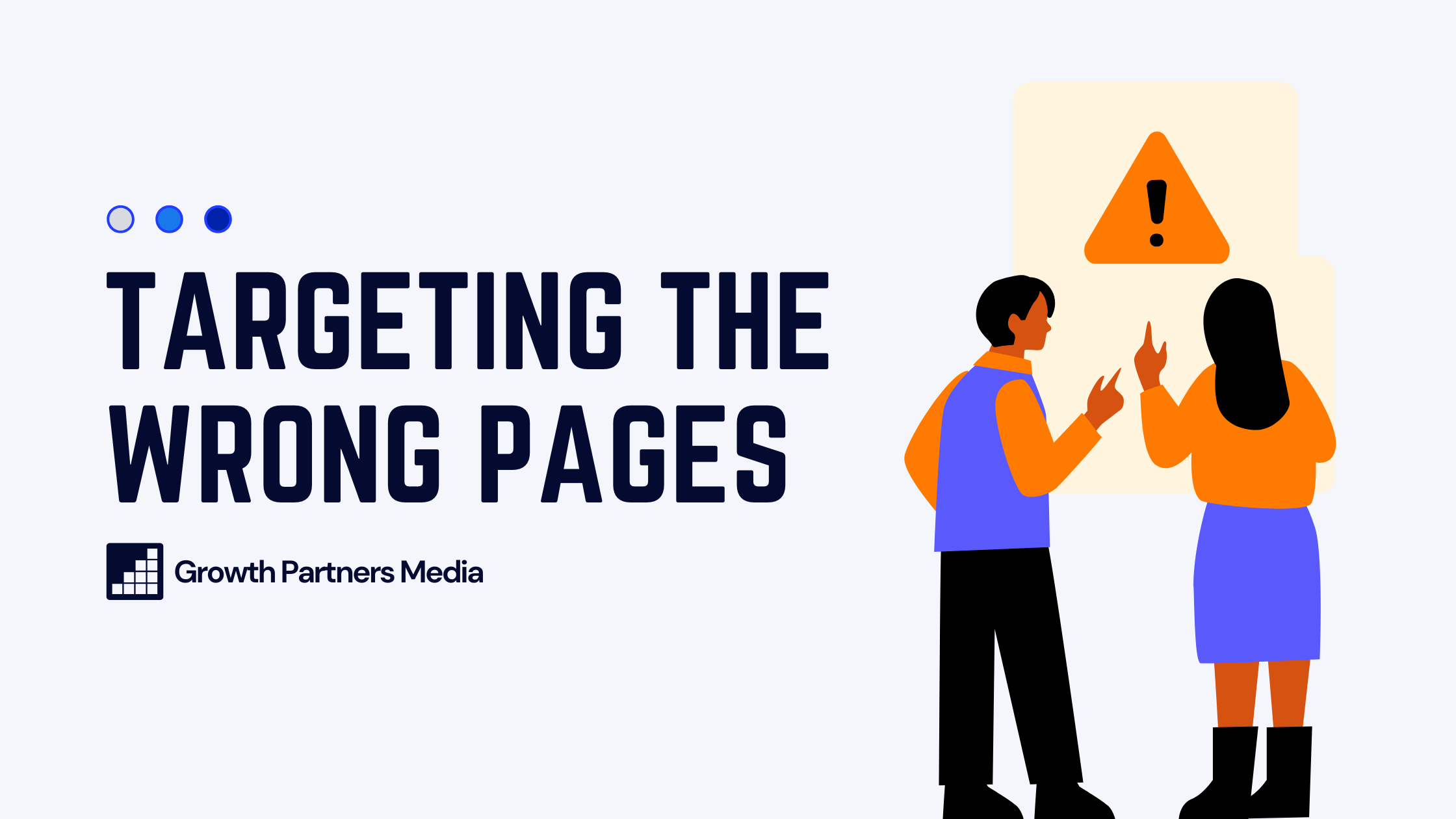
One of the biggest link-building mistakes we see?
Pouring effort into promoting the wrong pages.
That often means:
- Linking to low-intent TOFU blog posts that attract curiosity, not customers
- Boosting pages written just to chase keywords with zero relevance to your product
- Targeting pages that won’t rank anyway due to mismatched search intent or weak on-page signals
It’s a classic case of effort without strategy.
Links should do two things:
- Help a relevant page rank.
- Move someone closer to buying.
When you build backlinks, aim for pages that have leverage:
- High-value assets – In-depth guides, ROI calculators, comparison pages. These satisfy search intent and naturally attract qualified traffic.
- Internal-link hubs – Pages that funnel juice to multiple commercial URLs, multiplying every backlink’s impact.
- Commercial intent pages – Product or service pages. Category pages with transactional focus. BOFU comparison posts.
- Homepage brand mentions – Authoritative branded links feed entity-based ranking systems (think ChatGPT, Perplexity and Gemini) and solidifies topical authority.
Prioritize pages with strategic value, commercial intent, or internal leverage.
4. Using AI-Generated or Thin Content for Link Placements

AI is everywhere, but that’s not the problem.
The problem is how most people use it:
Mass-produced guest posts. No originality. No editorial value. Just a backlink slapped into a templated blog no one reads.
It’s fast, cheap… and worthless!
These articles rarely rank, rarely get shared, and often disappear after the next algorithm update.
Short-term? You get a few live links that look good on paper.
Long-term? Let’s just say you’re not doing yourself any favors.
At GPM, we use AI as a drafting tool, not a publishing strategy.
Every guest post is shaped by relevance, refined by editorial oversight, and written to deliver value instead of just ticking a box.
Let me show you what I’m talking about with some examples:
- A Guide on How Approval Workflows Strengthen Agency-Client Relationships
- How to Leverage Influencer Collaborations for Live Stream Growth
- The Evolution of Native Advertising
- The Role of Augmented Reality in Online Shopping
Our guest posts are so damn good, they make site editors blush because we genuinely outdid their in-house writing team on quality.
A backlink is only as strong as the content that surrounds it. And thin / low-quality content doesn’t build anything worth ranking.
5. Over-Optimizing Anchor Text

Few things kill trust faster than repeating the same keyword-stuffed anchor across every backlink.
It’s one of the most common patterns flagged by spam classifiers and one of the easiest for search engines and AI systems to detect.
The signal it sends?
Manufactured. Manipulative. Risky.
You probably already know this. Anchor text isn’t about hitting exact matches like it used to be.
It’s about creating a natural, diversified profile that reflects how people actually reference your brand.
The fix is simple:
- Use branded anchors to strengthen entity signals
- Mix in partial matches and contextual phrases
- Let the surrounding content carry the meaning, not just the hyperlink
Today, branded anchors do more than look clean.
They help large language models like ChatGPT and Gemini understand who you are and how you’re connected to your space.
This is SEO that’s moving more into entity-building.
6. Not Aligning Link Strategy with Business Goals
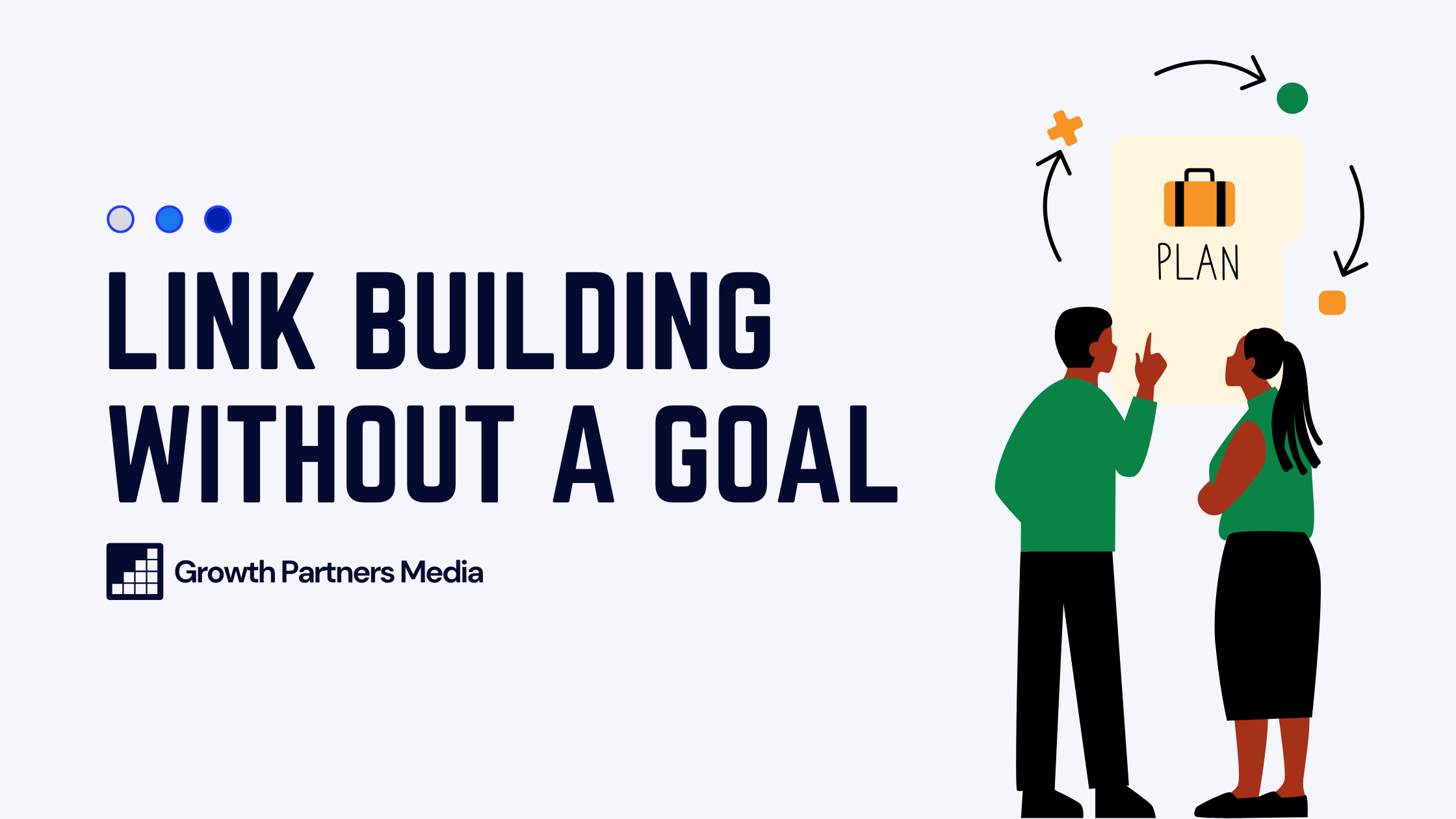
Most backlink campaigns are disconnected from what actually matters.
Poor page targets. No funnel awareness. No prioritization of commercial value.
Just a vague mandate of “WE NEED BACKLINKS.”
That’s how the budget gets burned and rankings don’t move. At Growth Partners Media, every campaign starts with the business case.
We reverse-engineer the link strategy from your goals:
- We identify priority keywords with buying intent
- Map those to high-value commercial pages or product-led content
- Audit existing rankings and assess how close they are to breaking into the top 3
- Build a strategy around low-hanging fruit opportunities that are most likely to generate results.
This is about more than landing backlinks. We focus on reinforcing the right pages at the right time. Whether that’s a product category on the cusp of Page 1, a bottom-of-funnel guide that drives conversions, or a branded asset designed to earn mentions across trusted sites.
This is strategic goal-driven link building that moves the needle for businesses.
7. Working with Agencies That Can’t Explain Their Process
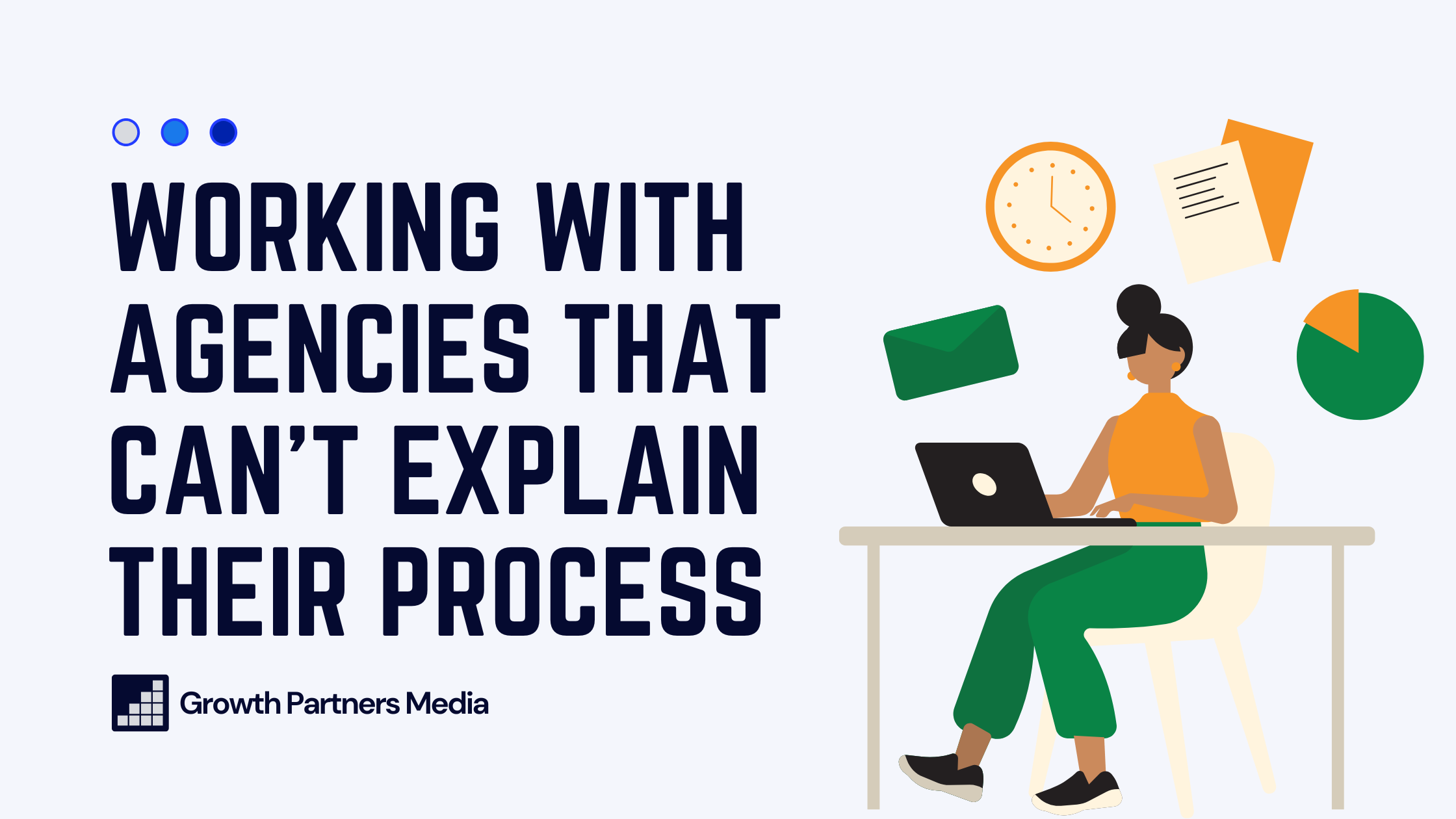
Not all backlinks are created equal — and some can do more harm than good, but here’s the real issue:
Most agencies rely on being opaque.
They send you a spreadsheet with URLs and call it a report.
But when you ask:
- Why was this site chosen?
- What makes it a good fit for our brand?
- How does this link support our rankings or goals?
You tend to to get this type of reaction:

If an agency can’t clearly explain their strategy, their qualification process, or the purpose behind each placement, they’re not doing SEO. They’re distributing links and hoping you won’t look too closely!
Here’s what to watch for in a backlink profile:
- Links from totally irrelevant sites or off-topic content
- Placements on domains with serious traffic drops or zero traction
- Repetitive guest posts on lookalike blogs
- Pages littered with outbound links
These are the fingerprints of shortcut SEO.
At GPM, every link we place is earned, strategic, and documented.
We run each domain through a 14-point qualification process that checks for:
- Real organic traffic (not spoofed or bot-driven)
- Topical relevance and clean link profiles
- Consistent publishing activity
- No “write for us” banners or sponsored content tags
- No links to gambling, payday, or adult sites
- No shady UX or link farm patterns
- Clean indexation, stable rankings, and legitimate authority
This is how we protect your brand while building authority that sticks.
So before you trust another agency with your link profile, ask the only question that matters:
Can you explain, in plain English, why this link exists?
8. Ignoring AI-Driven Search Shifts

We’re not in 2015 anymore.
Search isn’t just ten blue links. It’s AI overviews. Semantic search. Entity-based ranking.
And your backlinks?
They now do more than pass “juice”. They help LLMs understand who you are and why you matter.
Not paying attention to the gargantuan shifts happening in the space is a big mistake. Search marketing is shifting more than it has since it was invented.
Search is no longer keyword-first. It’s entity-first.
Here’s what that means for your off-page SEO in 2025:
- Brand mentions are the new backlinks.
- Semantic alignment matters more than raw metrics.
- Consistency across your site, social profiles, and citations feeds trust signals into AI models.
- Links need to come from credible, thematically aligned sources that reinforce your topical authority.
This is about more than rankings now. You’re focusing on discoverability in an AI-curated future.
If you’re not building a link profile that feeds the knowledge graph, you’re already behind.
Great Link Building is a Discipline, Not a Hack
Most link-building failures don’t happen because teams are lazy.
They happen because teams are in a rush.
They chase volume over quality. Trust fast-talking vendors. Skip the hard questions. And end up with backlinks that look good in a spreadsheet but do nothing in the SERPs.
But the kind of link building that actually moves the needle?
It’s deliberate. Strategic. And rooted in long-term thinking.
It takes patience to earn real placements. Clarity to target the right pages. And consistency to build momentum that compounds over time.
That’s what makes manual backlinks a cornerstone of sustainable SEO—each one intentional, contextually placed, and built to stick.
The good news? You don’t have to figure it out alone.
At Growth Partners Media, we’ve helped B2B brands clean up toxic link profiles, outgrow stagnant rankings, and dominate competitive verticals with a system that works — because it’s built for what search actually values today.
- How to Outsource Backlink Building Without Stress [2025] - October 7, 2025
- Top 3 SEO Outreach Services That Actually Work [2025] - October 7, 2025
- 9 White-Hat Link Building Techniques For AI & Google (2025) - September 23, 2025

